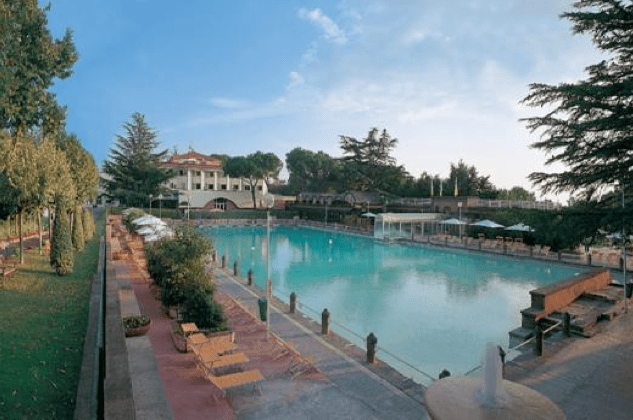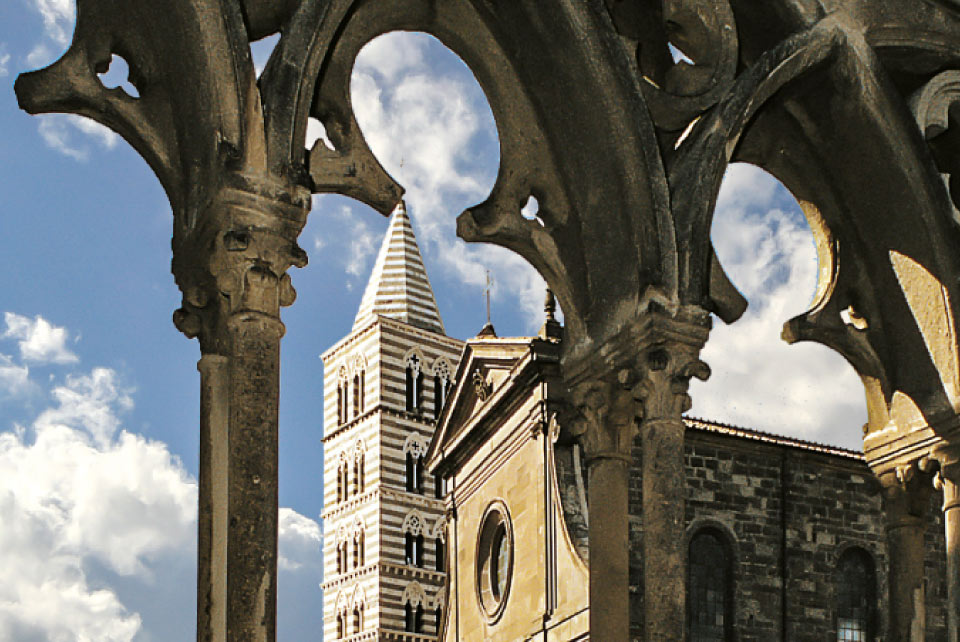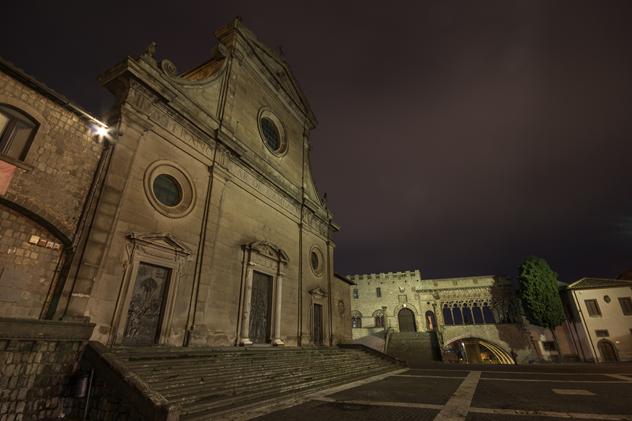PREZZO
Price is € 269.00 and up per person.
We create tailor made tours based on your group’s needs.
STRUTTURE
ITINERARY
HOT SPRINGS AND BOTANIC GARDEN
Arrival in Viterbo and check in to hotel Niccolò V*****. It belongs to the Terme dei Papi. Transfer to Agriturismo IL Marrugio for lunch. Afterwards, visit to the suggestive old town centre that through history has remained intact. The tour starts with Priori Palace, and Sala the Regia full of Frescoes. Next is Piazza, (square) del Gesu, political centre of the city up to the XIII century, Piazza, (square) Della Morte, that features a spindle fountain built at the beginning of two hundred, Farnese Palace, the popular Piazza, (Square) del Duomo, the Cathedral dedicated to Saint Lorenzo, the splendid Papal Palace, symbol of the city, and the house of Valentino Della Pagnotta. Thereafter, visit to the medieval unspoilt district of San Pellegrino. It features houses’ balconies decorated with flowers, craft, antiquarian and artist’s shops.
Return to the hotel and dinner.
Breakfast in Hotel. Visit to Michelin’s Plant Nursery which features a great variety of plants, and flowers. Rows of trimmed box hedges accompany the visitor towards the greenhouses, and the areas with many types of plants such as perennial herbaceous plants, Hortensia, fruit trees, Mediterranean trees, berry bushes, shrubs, climbers, and other many other 400 varieties. In the exposition area, the plants are accurately labelled and well-arranged in order to be identified better. Transfer to Vitorchiano. Time for lunch, (not included in the tour), in the Centro Botanico Moutan’s restaurant (Moutan Botanic Centre). It is named after a type of tree peony from China, and was built in 1993. This name was chosen for the centre out of a deep desire to know all the species and varieties of Chinese trees peony, find them in the remotest regions of Asia, import them to Europe, bring them together in a single place, and acknowledge their existence. The centre is located in the north countryside of Lazio, in an area of 15 hectares, and houses the world’s largest collection of arboreal peonies, and Chinese herbaceous peonies. It includes around 600 different varieties and natural hybrids. Besides the rare species which belong to the Delavayane’s group, the flagship plants of the entire collection are the adult’s plants of Rockii species, extraordinary variety which grow on Tibet uplands, over 2.000 metres above sea level. They endure extreme temperatures like minus 20 degrees. In the afternoon, return to Viterbo and time available for enjoying a wellness programme at the Vita Spa, thermal centre of the hotel Salus Terme.
Dinner in hotel.
Breakfast in hotel.
Visit to Tuscia University’s Botanic Garden. The Botanic garden Angelo Rambelli is a structure that in use for the university teaching, research, conservation of ex situ/in situ, and plays an important role in spreading scientific knowledge. It also touts thematic courses, events, and exhibitions in order to provide the basic knowledge of the vegetable world to the public, contributing to the creation of naturalistic awareness. The garden is set at about 300 metres above sea level, just near the hot spring Bullicame, (it is mentioned by Dante in his divine Comedy, canto XIV of Inferno), and covers an area of 6 hectares, east of Viterbo. The area is divided up into lots that house plants arranged based on taxonomy, phytogeography criteria, and environmental reconstruction, compatible with the climate and Pedological characteristics of the area. Time for lunch, (not included in the tour). In the afternoon, time for enjoying the spa’s treatments. Viterbo’s thermal water has volcanic origins, and its temperature goes above 40 degrees. The thermal centres provide tubs with both cold and hot water. Not only is the result of bathing in cold and hot tubs really healthy and beneficial due to sulphurous water, but it also improves the system circulation. The thermal water of Viterbo is rich in sulphur nitrogen, ideal for the skin treatments. Terme dei Papi of Viterbo is among the most equipped ones of Lazio, good for a healthy and relaxing vacation. The various treatments also include natural thermal mud. Dermatology treatments, inhalations, mud bath treatment, saunas, hydro-massage, nutrition education, are some of the magnificence services you find at the “ Terme dei Papi” of Viterbo. Not to forget also the good organization of the management.
The therapeutic structures of Terme dei Papi besides the thermal traditional medical treatments, provide important therapies such as inhalation, aerosol, humage, nebulisation,( good for chronic respiratory diseases of nasopharynx, larynx trachea, and main bronchi); sonic aerosols, (sinus, otitis); nasal irrigations (atrophic or hypertrophic rhinitis, sinusitis, ozena, sinusitis-bronchial syndrome); endotympanic insufflations and crenotherapic politzer, (affections of the tuba and the ear, rhinogenous deafness); pulmonary ventilations chronic obstructive bronchopneumopathy, bronchiectasis; whirlpools (chronic edema of the limbs, venous insufficiency, post-phlebitic syndrome); baths (arthritis, trauma after-effects, extra-articular rheumatism and other pathologies of rheumatological interest as well as dermatology such as acne, psoriasis, seborrhea, eczema); mud and massages, caves, gynecological treatments (chronic vaginitis, cervicitis, pelvic inflammatory diseases, prevention and treatment of some types of infertility); oral cavity therapies; Physiokinesitherapy and motor rehabilitation. The trip to “ Terme dei Papi” is going to be one of a kind and you will look forward to coming back in the future. The Spa was named after “dei Papi “because of the Pontiff Niccolo V. He had first-hand experience when he cured his illness with the Spas’ water, and in 1450, ordered to build a palace where he could stay if he needed to. The construction features crenellated walls, beautiful cross shaped windows, and halls decorated with vaults, and since then was named “Bagno Del Papa” (Pope’s bath). Thereafter, Pope Pio II restored the palace. Poets and artists have left their works in this structure. In the divine comedy, Dante Alighieri, mentioned many times the Bullicame’s spas , and in particular in the canto XIV of Inferno. Michelangelo Buonarroti, passing by the spas of Viterbo, in one of his trips to Rome, (between 1496-1536), was stricken by the beauty of the Spa, and ended up to depict them. Nowadays the pictures are displayed at the Vicar de Lille Museum in France. Sulphurous and carbonic gas push the water, 40-58 degrees, ( rich in sulphur salts, and bicarbonates of calcium), from underneath through a 12 km of fractured land where many springs pop up, The Most important one is the calcareous white small hill called “Bullicame” . Its water (58 degrees) is popular for its therapeutic qualities and at the same time is used for the splendid monumental swimming pool of more than 2000 square metres.
End of the tour.







